'Accidental survivors in dense forests' on show
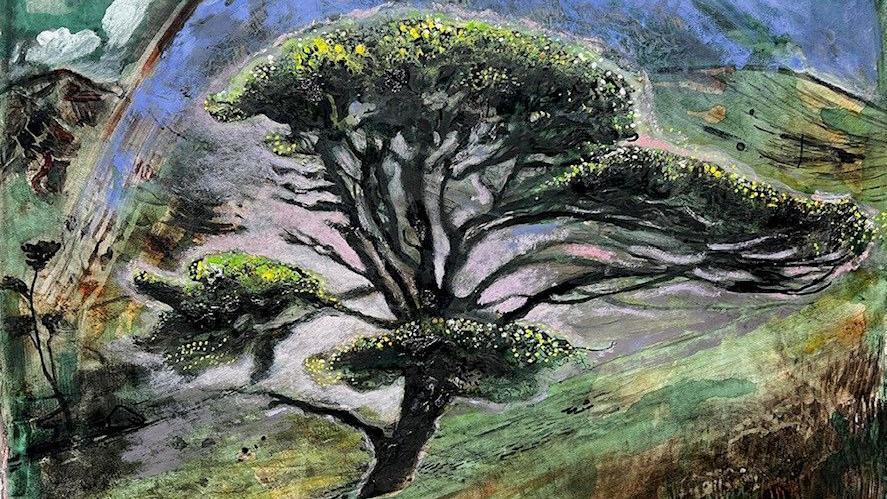
The Glen Loyne Pine is descended from the first pines to arrive in the country
- Published
Paintings celebrating 800 years since Britain's "first environmental laws" are going on display in London.
An exhibition commemorating eight centuries of Magna Carta and the Charter of the Forest is due to open on Friday at the Society of Antiquaries in Burlington House, London.
Artist Dan Llywelyn Hall has created four pictures depicting trees across Great Britain.
All the trees included in the work, entitled the Totems to the Charter, were alive at the time the Charter of the Forest was signed.
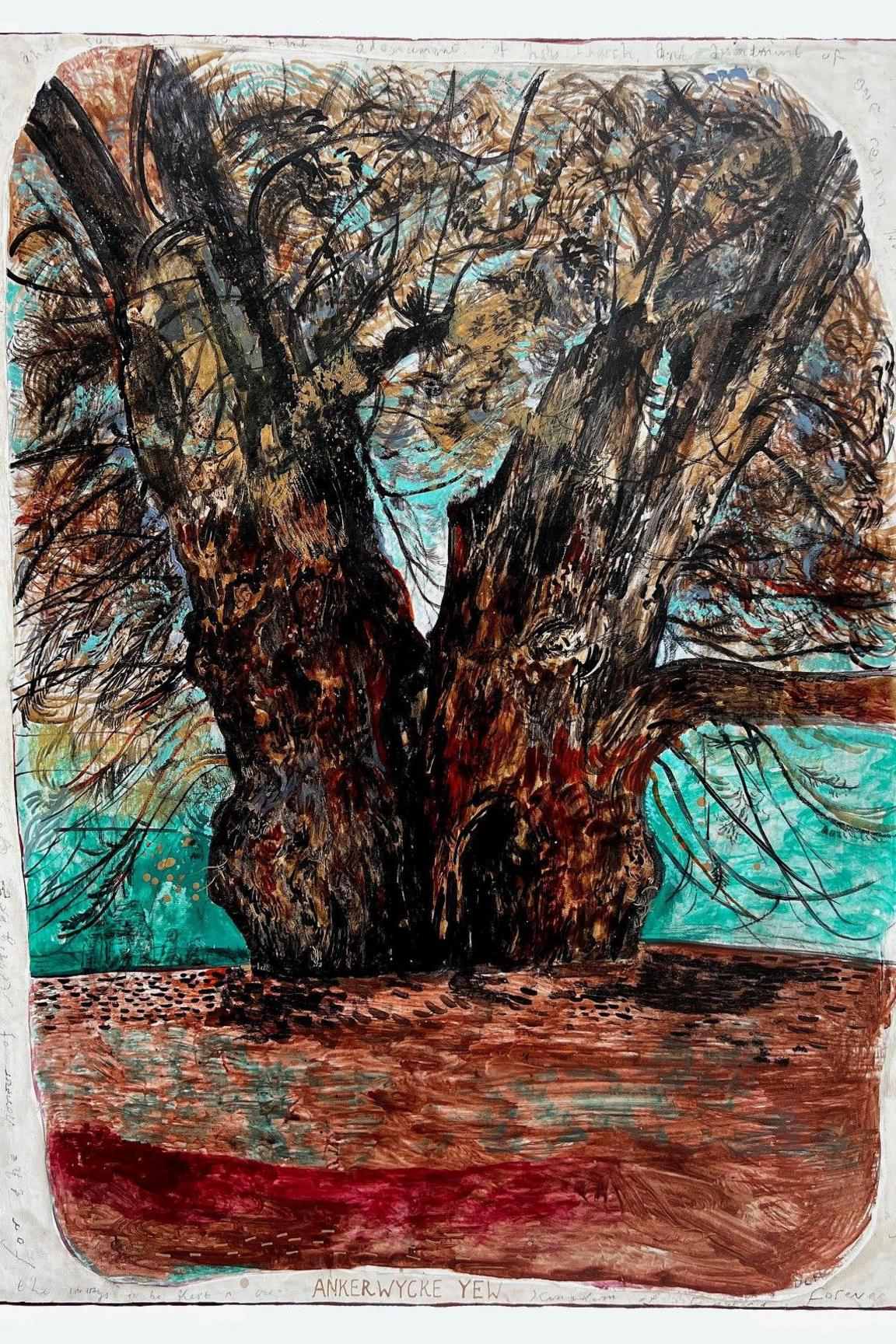
The Ankerwycke Yew, beneath which Henry VIII is believed to have courted Anne Boleyn
The Charter of the Forest, which Llywelyn Hall described as the "first bit of environmental legislation", ultimately paved the way for the right to access woodland.
Some elements of the forest laws remained in force until the 1970s.
The trees in Llywelyn Hall's works are:
The Ankerwycke Yew
An ancient tree close to the ruins of St Mary's Priory in Surrey which is believed to be 1,400 to 2,500 years old.
Some people believe the sealing of the Magna Carta took place by the tree.
The yew is also said to be one of the places where Henry VIII courted Anne Boleyn.
The Glen Loyne Pine
Descended from the first pines to arrive in the country in about 7,000BC, the surrounding woodland is at risk from overgrazing by deer. The number of pine trees has dropped to just 57.
More than 1,000 years old, the oak in Wentwood Forest in Monmouthshire is the oldest in Wales.
Llywelyn Hall described it as "sitting squat, nestled in a dense pine forest and oozing with atmosphere and an otherworldly presence".
The beech trees near the Lost Pond in Epping Forest are some of the oldest of that species in the world.
The artist described the "vast sprawl" of the Lost Pond Beech as like an "ominous guardian".
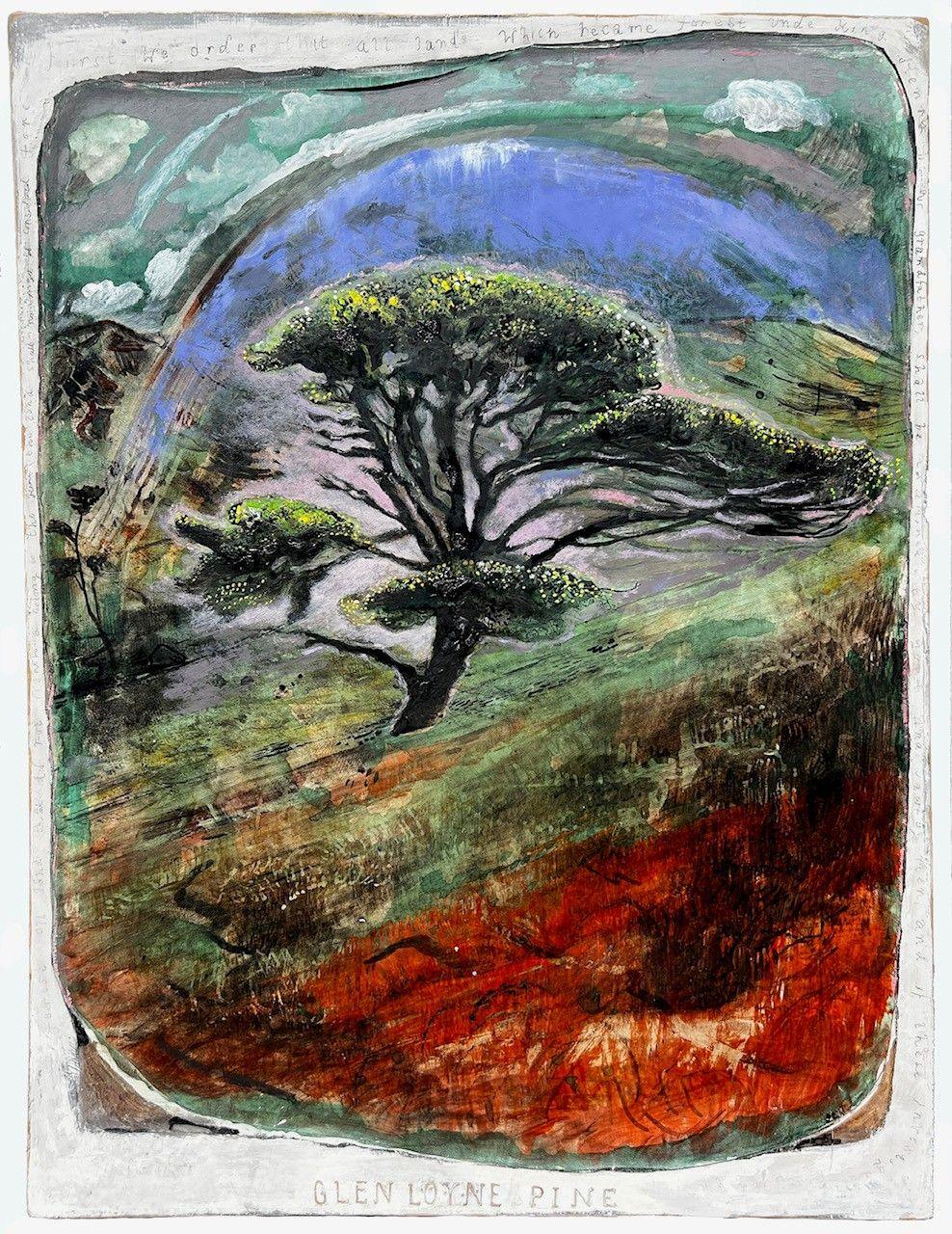
There are just 57 pine trees left of those descended from the first to come to Britain
Llywelyn Hall said: "The Totems to the Charter are the silent witnesses; the ancient veteran trees that were around at the time of the signing, 800 years ago.
"These rare, silent witnesses are largely the accidental survivors in dense forests; embodying history myth and legend, not to mention extraordinary eco-systems of their own.
"They deserve more reverence and protection than any manmade structure."
The paintings, which go on display from 25 July to 19 September, will be sold to raise funds for the Society of Antiquaries library and collection as well as the charities Trees for Life and Trees for Cities.
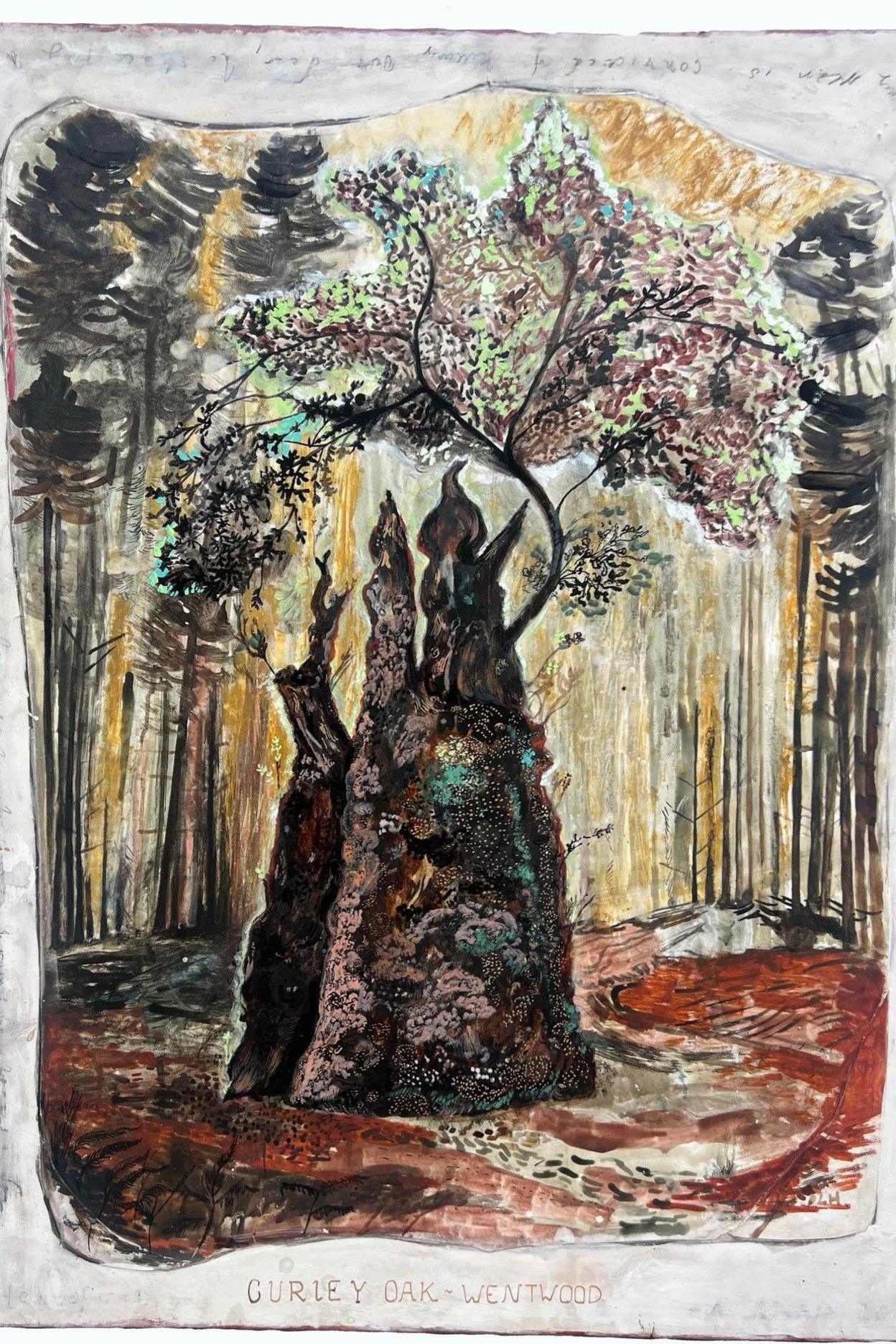
The Curley Oak is "oozing with atmosphere and an otherworldly presence", the artist said
During the reign of King John, who signed the first Magna Carta of 1215, large swathes of England were designated royal forest and set aside solely for the king's use.
The Charter of the Forest granted rights to land, food and fuel to a wide cross-section of English society, from barons to commoners.
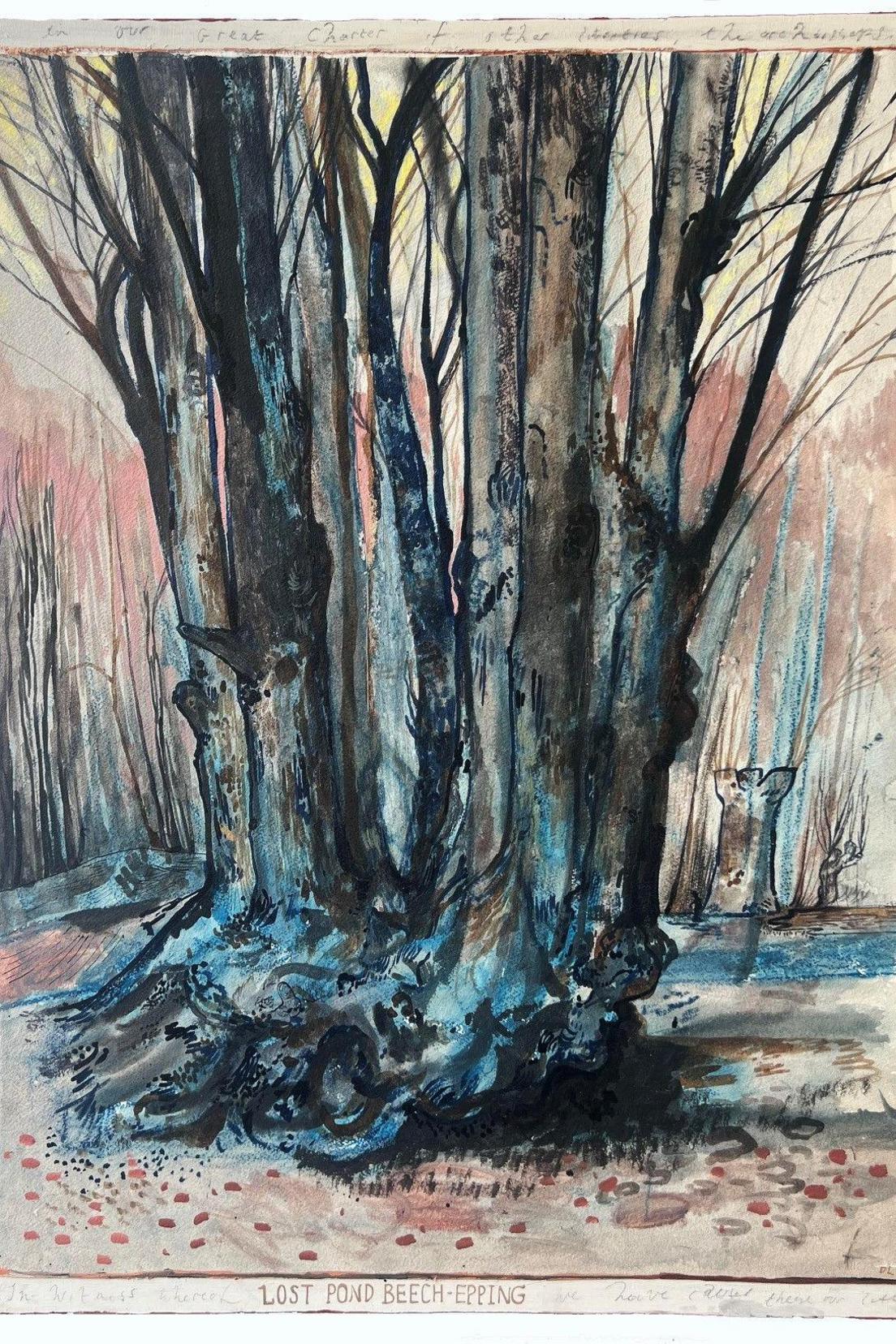
The beech trees in Epping Forest are some of the oldest of that species in the world
While Magna Carta and the charter were English documents, chapters did deal with grievances with Welsh rulers and the King of Scotland.
It is believed to be the first document in which English and Welsh law appear together and shows the Welsh, Scots and English sharing political ideas and procedures.
Listen to the best of BBC Radio London on Sounds and follow BBC London on Facebook, external, X, external and Instagram, external. Send your story ideas to hello.bbclondon@bbc.co.uk, external